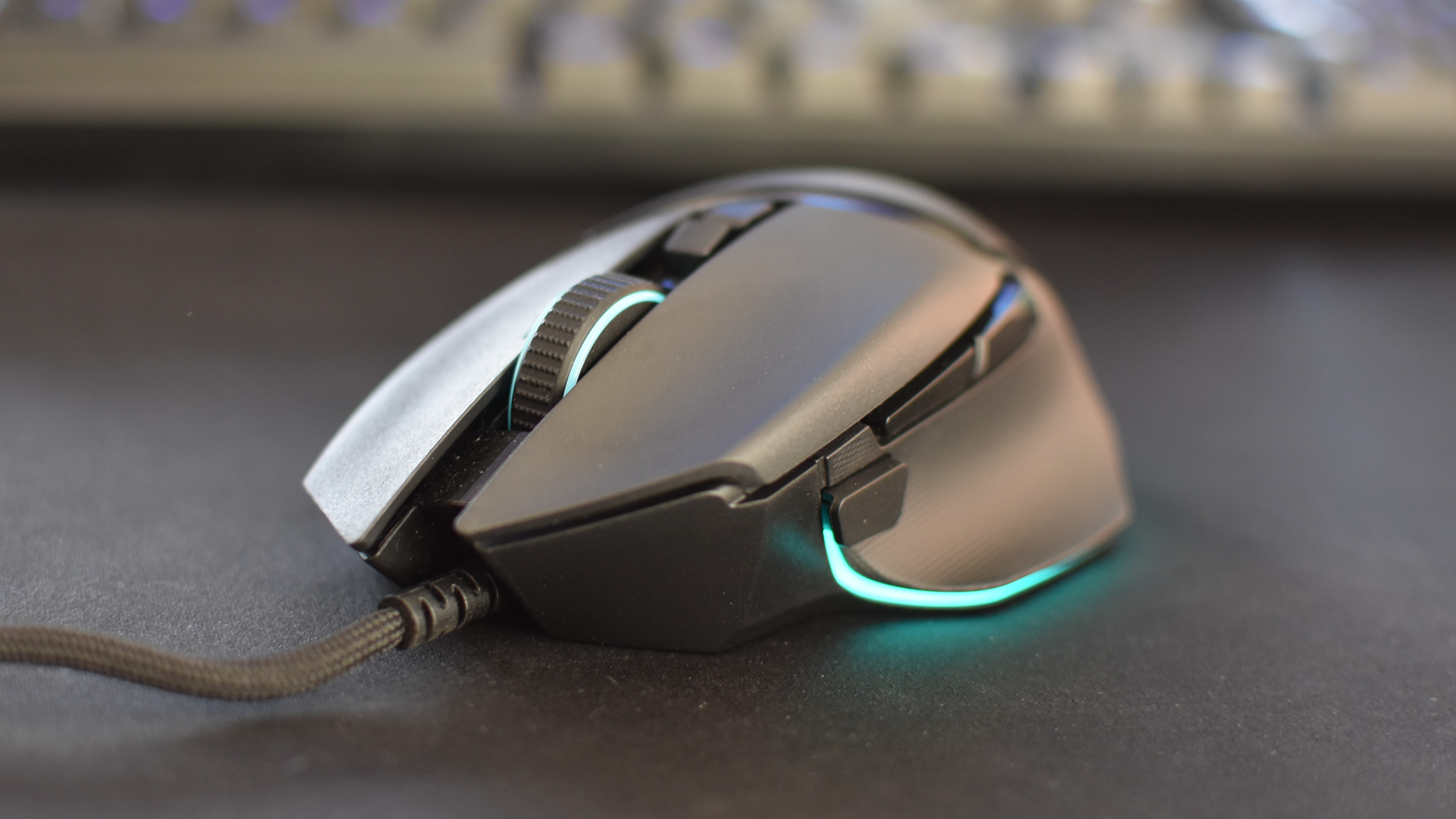First up, the sensor. Whack up the sensitivity, either with the onboard switch or Razer’s Synapse software, and this is the nimblest Basilisk yet. It includes a new version of the Basilisk V2’s Focus+ Optical Sensor, which ups the maximum DPI from 20,000 to 26,000. That’s more than a little twitchy for my tastes, but after a few days using the Basilisk V3 it’s always felt crisp and accurate at lower DPIs as well. Once again you get a hefty 11 programmable buttons, plus the ability create multiple button mapping profiles in Synapse and hot-swap between them via a button on the underside. This time, though, Razer has done away with the removable paddle next to the two main thumb buttons, instead making it another permanent fixture. I liked the look and feel of the Basilisk V2’s paddle, but this is definitely an improvement; the fact that the previous design clipped onto the mouse with a magnet made it seem like a cool add-on, but the strength of that magnet was suspect, and why would you even want to remove another easily-accessible button in the first place? The Basilisk V3 stops hedging bets and gives this input the built-in status it deserves. The Basilisk V3 is very slightly heavier than the V2 – 101g to its predecessor’s 92g, not counting cables – but its familiar contours keep it comfortable. Between the well-judged thumb rest and the rubbery grips on either side, it stands up to the RPS reader favourite Logitech G502 on ergonomics, and just below these you’ll find the Basilisk V3’s main aesthetic touch up: a new strip of customisable RGB lighting, to match the rings on the scroll wheel and the Razer logo on the palm rest. I wouldn’t say this spoils the relatively restrained looks that the Basilisk series has always stuck with. You can’t even see the strip itself unless peering at the mouse from a sideways angle, and for those of us who can abide by a bit of go-faster lighting now and then, it will impart a rather pleasant glow to the desk or mousepad. Oddly, the biggest change comes to the scroll wheel. Gone is the Basilisk V2’s adjustable resistance feature, replaced by a wheel that tries to be smarter about switching between normal scrolling and free-wheeling. Yes, free-wheeling, a feature that seemed like it would always be limited to Logitech mice for patent reasons. There’s a bog-standard button that switches between the two modes, as there are on many Logitech mice, but through Synapse you can also engage “Smart-Reel” mode. This keeps the tactile scrolling mode as the default, but flicking the wheel with sufficient speed will now automatically make it free-spin. It then returns to tactile spinning either when you stop it revolving or, even more cleverly, after the wheel senses when you haven’t touched it for a few – the wheel even stops itself spinning completely. While I miss the V2’s adjustable resistance, the Basilisk V3’s multitalented wheel feels like more of a genuine quality-of-life improvement, as opposed to something that mainly just caters to my pernickety tendencies. Imagine if you didn’t need to manually press Shift or Caps Lock every time you wanted to type a capital letter, and that your keyboard just knew when you needed to switch; that’s like what scrolling on this mouse feels like. Granted, Smart-Reel benefits browsing and document editing much more so than games, though the ability to create and quick-switch profiles came in handy here too. I simply created a general desktop profile with Smart-Reel enabled, and a separate gaming profile with it disabled, so I could – for instance - scan through my overstuffed Fallout: New Vegas inventory without accidentally setting off free-spinning. Pricing comes in at £70 / $70, so the Basilisk V3 is actually launching a little cheaper than the V2 model did. And although that’s not enough to give it the sheer value of the G502, it is a seriously good mouse – one of Razer’s best gaming mice yet, in fact, especially if you want plenty of customisable inputs without the full-on MMO madness of something like the Razer Naga Trinity or the Corsair Scimitar Pro RGB.

